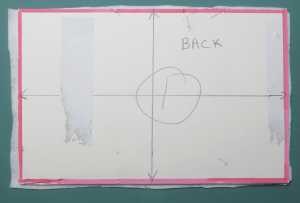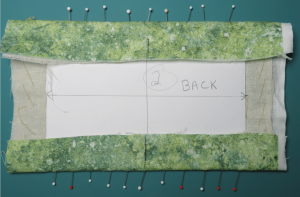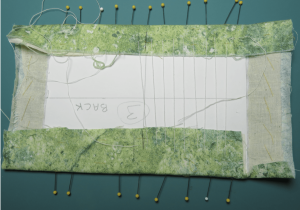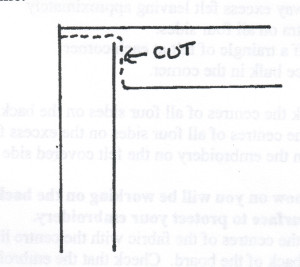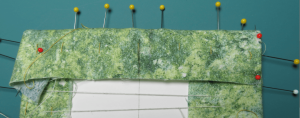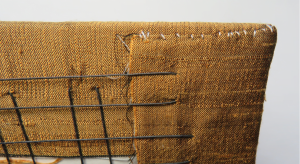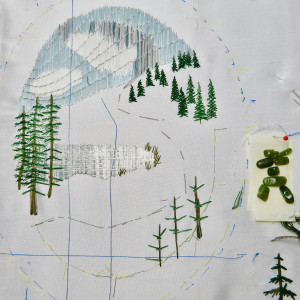This multifaceted embroidered tapestry was gifted to the City of Toronto on March 4, 1984 by the Toronto Guild of Stitchery on the occasion of the 150th (Sesquicentennial) Anniversary of the founding of Toronto. I cannot give you a photo of the whole piece as it is just too large. Here is the first pair of environment panels and the beginning of the frieze. They show that the city was once forested. The aboriginal tribes met here between the mouths of the rivers that empty into Lake Ontario. In fact, Toronto is ‘meeting place’ in Mohawk.

You can see the Indians in the frieze and the first settlers cutting down the trees for a settlement. The end panels are a stylized design of the coats of arms of the city of Toronto. They are worked on canvas using a wide variety of stitches. (The white circle is a paper punch hole).
Let us start at the beginning. Two of the members, Ivy Clark and May Horn had been on a trip to England where they saw the Hastings and the Bristol Embroideries. They came home with a bright idea. With a big anniversary coming up for their city, they suggested the guild members create a tapestry telling the history of Toronto. In their honour, it is dedicated to Ivy and May.
Little did any of the members realize what they were undertaking. A design competition was held which was won by Barbra Gordon, a student at the Ontario College of Art. She was the winner of the Gold Medal that year.

Barbra Gordon. 1984
Members did historical research and their findings were incorporated into the design.
This was 1977 which is now 42 years ago. The guild members had 6 years to complete their gift. Assistance with the funding came from The Trillium Foundation but the membership raised half the cost of the materials and other essentials.
You can see this embroidery for free. The Cafe on the Square is located on the ground floor of City Hall. Behind the cafe, you will find a corridor. A curved staircase goes down to the lower level. The Toronto Historical Embroidery is hanging at the base of those stairs. It has its own lighting system and is protected by a clear plexiglass cover. There is also an audio presentation.

These first panels show the forest that was there in 1793 and has now become the city of Toronto. The elliptical shapes echo the clamshell architecture of City Hall which was completed in the early 1960s.
Once the maquette was complete and coloured by the designer, the members formed teams to focus on the many facets of the undertaking. They had to make a master tracing. The tracing was then copied and patterns were made for each piece of fabric in the upper and lower panels. There were many hundreds of pieces. Each one was numbered, balance marked and a grainline arrow added so that the fabric was cut grain perfect. Look back at the panels and note the complexity of the design. Each piece of fabric had to be the correct colour and positioned exactly in place. The upper and lower panels were assembled using machine embroidery and it was a big job. Marie Fenwick, was the organizer for making the panels and also did a considerable amount of this embroidery.
To give a concept of the size. the section you have seen is under 3 feet wide and 6 feet high. The whole Embroidery is 24 feet long and 6 feet high.
This is the first of a series about the actual creation and stitching of the Toronto Historical Embroidery. As such, it is rare. We see completed pieces of embroidery but have no idea of what was involved in creating them. Happily, there are photos and, despite it being 40 years ago, there are a few survivors to share the experience with you.
Please share these blogs with friends, other stitchers and those who would be interested. Let me know if you would like to be directly on the mailing list.
Postings are planned for every two days. Enjoy!
Comments are welcome.
